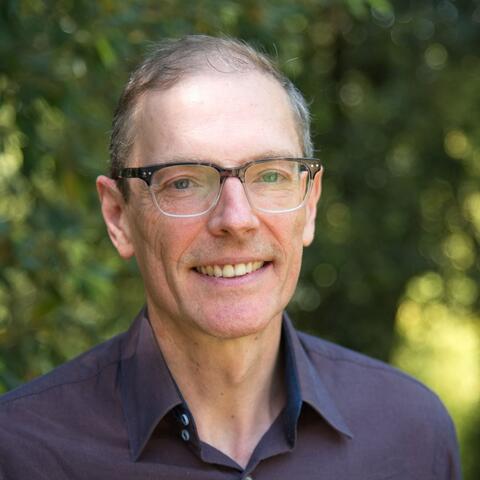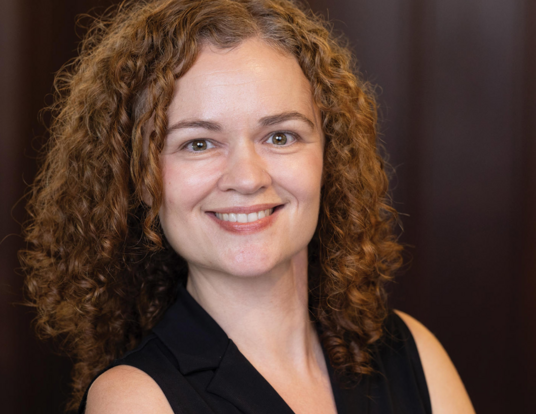Echoes of the Past
How one graduate student gave a fading culture new life
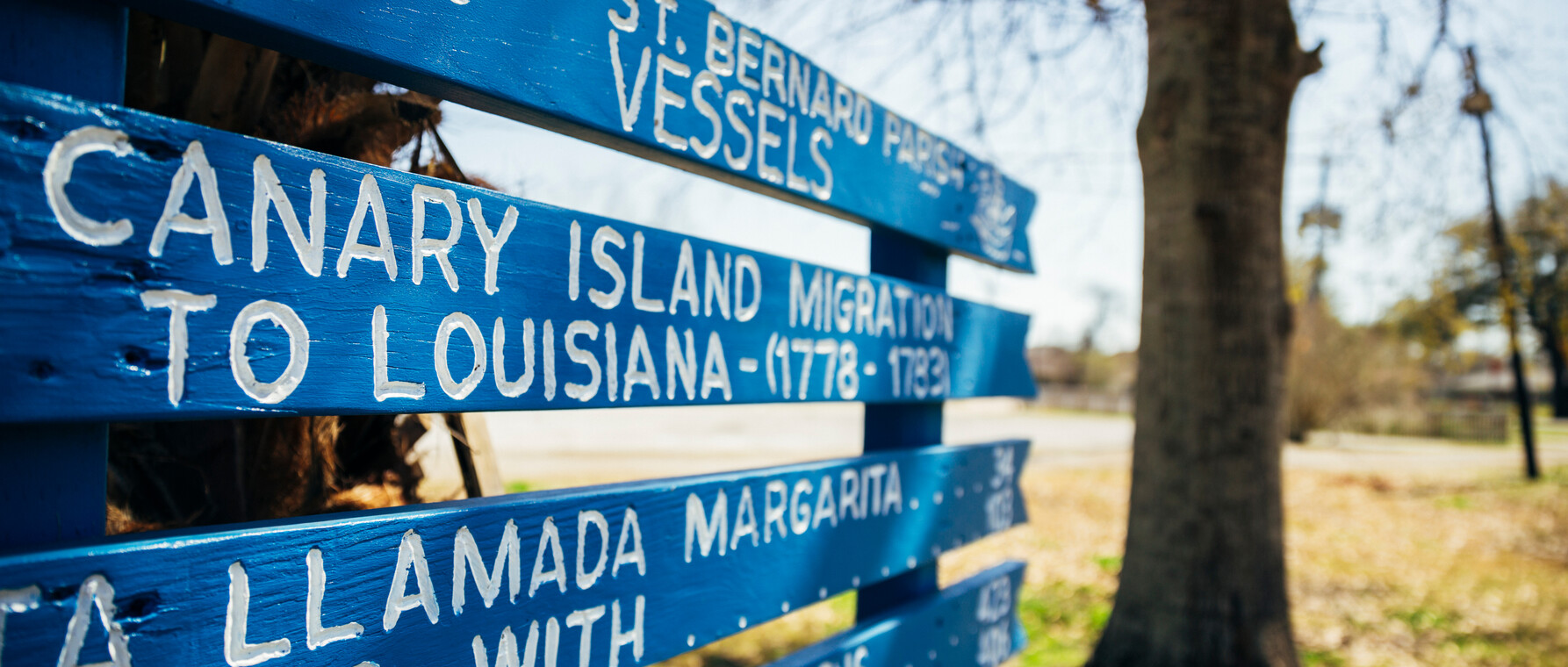
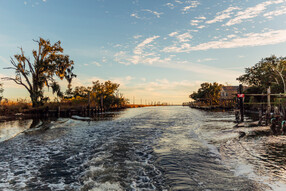
Thenesoya V. Martín De la Nuez vividly remembers what it was like in 1997 to hear legendary Louisiana isleños singer and wood carver Irvan Perez sing the décima, a creolized version of the traditional Spanish ten-line improvised narrative poem. At the time she was 18-years-old, studying Hispanic philology at the University of Las Palmas de Gran Canaria, in the Canary Islands, the Spanish archipelago off the coast of Africa. Perez, a descendent of the Canary Islanders who settled in the bayous of Louisiana in the 18th century, was “among the last of the Canary Islanders from Louisiana who kept the oral traditions of Canary Islander descendants alive.”
“I was so moved, I cried. Here was an American, a US citizen—and he was speaking like us—like Canary Islanders,” Martín says. Despite the fact that a vast ocean and three centuries separated the two communities, she immediately noticed similarities in the language. “The accent was a little bit different, but he was using a specific vocabulary from the Spanish of the Canary Islands,” she remembers. It was a visceral, poignant experience that would preoccupy her for years.
Cultural Curiosity
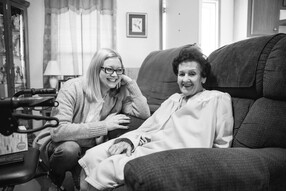
In the 18th century, Spain colonized new territory by resettling previously colonized and assimilated indigenous people in new parts of its expanding colonial empire. Between 1778 and 1783, more than 2,000 Canary Islanders, themselves the descendants of the original Berber inhabitants of the islands and Spanish colonists, were settled in Spanish Louisiana. For them it was a chance to escape a harsh, unpredictable subsistence economy dominated by producing malvasía wine for European markets. They brought with them the décima, which originated in the oral poetry of 16th-century Spain. “The décima is the perfect living example of cultural integration and hybridization and what it means to migrate from one place to another,” she explains. “They kept the form and some of the classical topics of the poem, but new topics were added to the oral tradition because the context of where they were living changed.” The Canarian migrants developed one variation, and the décima took on a variety of creolized forms throughout the Hispanic New World, including in Cuba, Puerto Rico, and Ecuador.
Martín’s study of Spanish literature would eventually take her from Gran Canaria, one of the Canary Island’s two capital cities, to the Universidad Compultense in Madrid, where she studied literary theory and comparative literature, earning a master in literary studies before arriving at Harvard for PhD studies in the Department of Romance Languages and Literatures. Her academic journey brought her closer and closer to the communities of Canarian descendants in Louisiana and Texas.
At first, her investigations of the cultural and dialectical variations among Canarian descendants were at a remove from the close-knit, isolated community concentrated in the bayous of Saint Bernard Parish southeast of New Orleans. The studies she read sounded a warning: Canarian culture in Louisiana was already dead. Part of the reason was the loss of traditional forms of culture due to the natural passing of generations, part of it was environmental: In 2005, Hurricane Katrina destroyed many Canarian communities and historical sites, including a little museum in Saint Bernard.

The scholarly books she read analyzed linguistic connections and traced migration patterns, but while Martín was seeking information about the Canarian descendant, she couldn’t shake the feeling that something was just out of her reach. “I had been reading for years, but I was always missing something,” she says. “The faces of people. Where are they? Who are they? Do they seem like Canary Islanders right now? I didn’t have any idea of how they looked, how they dressed, where they lived or what they did. I wanted to be there. I wanted to understand how their cultural legacy developed over three centuries. I wanted to understand how successive waves of immigration and migration from the Spanish Peninsula and the Caribbean, as well as marriages into the Cajun community, shaped and affected that legacy.”
Language Connections
That’s when Martín got on the Internet, “trying to find out anything and trying to find names.” There she discovered news stories covering Canarian descendants who had been displaced by the destruction Hurricane Katrina wrought on the bayous. And then she got on the phone, cold-calling people whose names she found in interviews. Her first contacts with Canary Island descendants were a revelation, particularly one phone call that proved Canarian culture still survived. The call started in English, but “in a certain moment of the conversation, I asked this man, ‘Do you speak Spanish?’ because I thought Spanish was lost, and he started talking in Spanish, like a Canarian.”
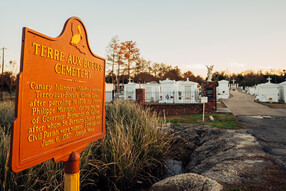
That phone call eventually led to an invitation for Martín and her husband, documentary photographer and photojournalist Aníbal Martel, to visit St. Bernard Parish. They made their first trip in January 2013, thinking that, depending on what they found, they might collaborate on an article together that told the story of their experience. Once there, the people they met, the stories they heard, and the photographs Martel took convinced them that the project would have to be much larger to encompass all they were discovering.
That’s when they decided to embark on a cultural documentary project, a traveling photographic exhibition and a book focused on the communities of Canary Island descendants in the United States. Together they wanted to understand, firsthand, the history, traditions, and the language of the community. What started as a project to find what was missing from scholarly accounts of Louisiana culture and connect with the descendants face-to-face, is now documented by an archive of over 100 interviews and more than 8,000 photographs collected during four years of field work.
Creating CISLANDERUS
Thenesoya Martín and Aníbal Martel dubbed their project CISLANDERUS, joining Canary + Islanders + United States into an acronym that acknowledged the joining of two cultures, while also making reference to the personal pronoun “us,” so as to acknowledge the commonalities on both sides of the cultural equation in the United States and in the Atlantic archipelago. Their focus, for the last four years, has been a series of independent, self-funded fieldwork trips to Louisiana and Texas tracking the original settlements. They went first to Delacroix Island in St. Bernard Parish, Shell Beach and Reggio, South New Orleans. Then they began to trace a complicated map of Canarian descendants scattered throughout Louisiana, including around Baton Rouge and the lower Mississippi River.

The result of their shared ethnographic and photographic work first went on display in an exhibit in Las Palmas at the Casa de Colón, or Columbus’s House, last summer. The gracious colonial-style mansion now houses an art and history museum that tells the story of the Canary Islands and its relationship to the Americas. It was a fitting site for an exhibition dedicated to documenting the trace evidence of migration and cultural transmission, considering that Christopher Columbus anchored in Las Palmas on his first trip to the Americas in 1492.
The exhibition, which featured 60 of Martel’s photographs, evokes a long tradition of documentary photography, suggesting the work of the German portrait photographer August Sanders and the American documentary tradition of the Farm Security Administration, including Dorothea Lange, Walker Evans, and Marion Post Wolcott, who photographed the Delacroix community of Canarian descendants known as isleños in 1941. Martel has focused his lens on landscapes, lives, and faces. Think of it as a cultural close-up: what was once an abstract picture of a fading culture is now immediate, intimate, personal, and alive.
From CISLANDERUS to Scholarship
Given the lure of the islands for Martín, it should come as no surprise that islands feature prominently in her doctoral studies as well. “When I was in Madrid, I developed this intense and passionate love of islands, and I started researching and reading about them,” she shares. She also acknowledges the irony that only when she left her home in the Canary Islands did the idea of islands present itself as the focus of her intellectual work. “I was not a lover of islands until I left my own.”

Contemplating her own intellectual and emotional relationship with the Canary Islands lead her back to literature. “Islands have been foundational to literature since Homer’s Odyssey,” Martín notes, pointing out that Homer’s epic is, after all, centered on Odysseus’ wanderings among the Ionian Islands. The island of Atlantis first appears in Plato’s dialogue Timaeus, written in 360 BC. The history of its battle with Athens becomes the occasion for a second dialogue, Critias, where the battle between the two powers serves as an allegory for Plato’s concept of the state in The Republic.
“It’s amazing how the cultural production of islands always has something in common,” she observes. “Islands are pieces of land that have always tried to be defined, and it’s really difficult to find a definition of an island. So I always say that an island is a piece of land that’s surrounded by theories instead of being surrounded by water.”
Martín designed her dissertation as a comparative study of 20th-century literature and culture in three insular Spanish-speaking and post-colonial spaces: the Canary Islands in the North Atlantic, Cuba and Puerto Rico in the Caribbean, and the islands of Equatorial Guinea, located in the Gulf of Guinea, off the coast of Africa in the South Atlantic. Equatorial Guinea, which was a Spanish colony until 1968, is the only African country where Spanish is the official language.
“Islands have been always described as isolated places, places of exile, places that are considered out of history,” she notes. “The point of my dissertation is to read the islands and the cultural production of the islands, in terms of connectivity instead of as isolation. It’s the ‘betweenness’ of the islands that illuminates the connections.
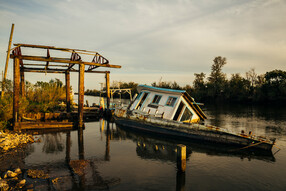
In the process of researching and writing her dissertation, Martín has found herself rethinking the concept of the island itself, centered on the theme of migration. “Many of the island writers are thinking about what it means to be an islander,” she says. “What it means to be an island, what it means to always be depending on what comes from a foreign place, and how this affects being an artist, how this affects us as humans, and how we connect with different people. You can find it in more obvious ways or more hidden ways, but it is always there.”
Her research will also contribute a more synthetic understanding of islands and cultural production. “In the context of trans-Atlantic and island studies, the aim of my research,” she explains, “is to take into account a more realistic and polyhedral configuration of Hispanicism that includes not only the nexus of the Canary Islands, but also former African possessions of Spain and their connections with the Caribbean.”
Her two projects, one scholarly, one curatorial and ethnographic, are distinct intellectual endeavors, but have influenced each other. “What CISLANDERUS changed in my dissertation is that I became more open to different kinds of texts.” she says, pointing out that the tools of literary analysis can be applied to various kinds of cultural productions, such as the oral histories and the family stories she’s collected in Louisiana, or the documents she discovered in family and historical archives. In turn, for her dissertation she has explored enlarging her field of analysis, both in terms of how migration shapes cultural production, and also in terms of what sorts of texts she studies, extending beyond literature to include other cultural artifacts, such as film, documentary, and works of art. “Everything,” she says, “is a text in the end.”
Back to the Beginning
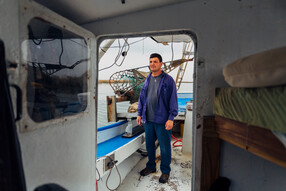
What’s next? CISLANDERUS, Thenesoya says, has turned her and Martel into accidental, but enthusiastic cultural entrepreneurs. “We’ve had to learn to deal with press interviews and with budgets,” she explains. “Aníbal is always focused on the prints. I learned how to organize an exhibition. I was not a curator. Now I’m a curator. It’s complicated, but amazing.”
As she sets her sights on completing her dissertation, Martín and Martel are continuing to work on CISLANDERUS. After their explorations of Louisiana, they have expanded their fieldwork to San Antonio, Texas. “We want to document the present,” she says. “It’s the book I looked for at the beginning, but it didn’t exist. So I am writing it.” The book, she shares, “will be a story of cultural survival, investigating how the complex Canarian cultural legacy has survived or, in most cases, been reinvented in a complicated process of cultural nostalgia.”

“I want the people I’ve interviewed to be the centerpiece the book, not only a name and a face, but their intricate stories and interviews, presented alongside newly discovered archival material I’ve found throughout Louisiana and Texas.” More and more, she and Martel are putting themselves in the story, too, to include their personal story of working with the communities they have come to know over the last four years. “I’m more and more convinced,” she says, “that this is the perfect combination of academic research, documentary photography, and ethnographic research.”
Photos by Aníbal Martel
Get the Latest Updates
Join Our Newsletter
Subscribe to Colloquy Podcast
Simplecast


